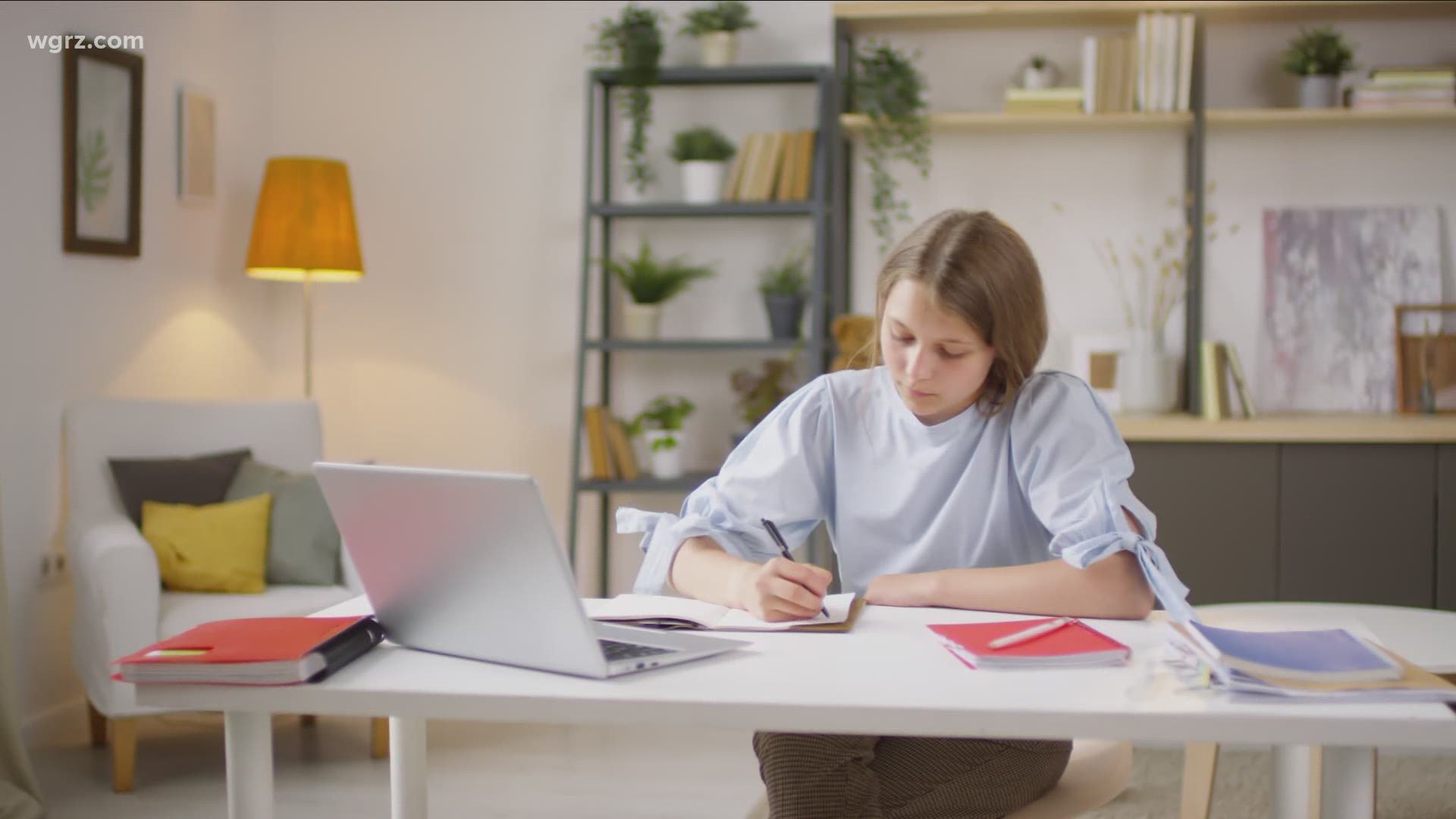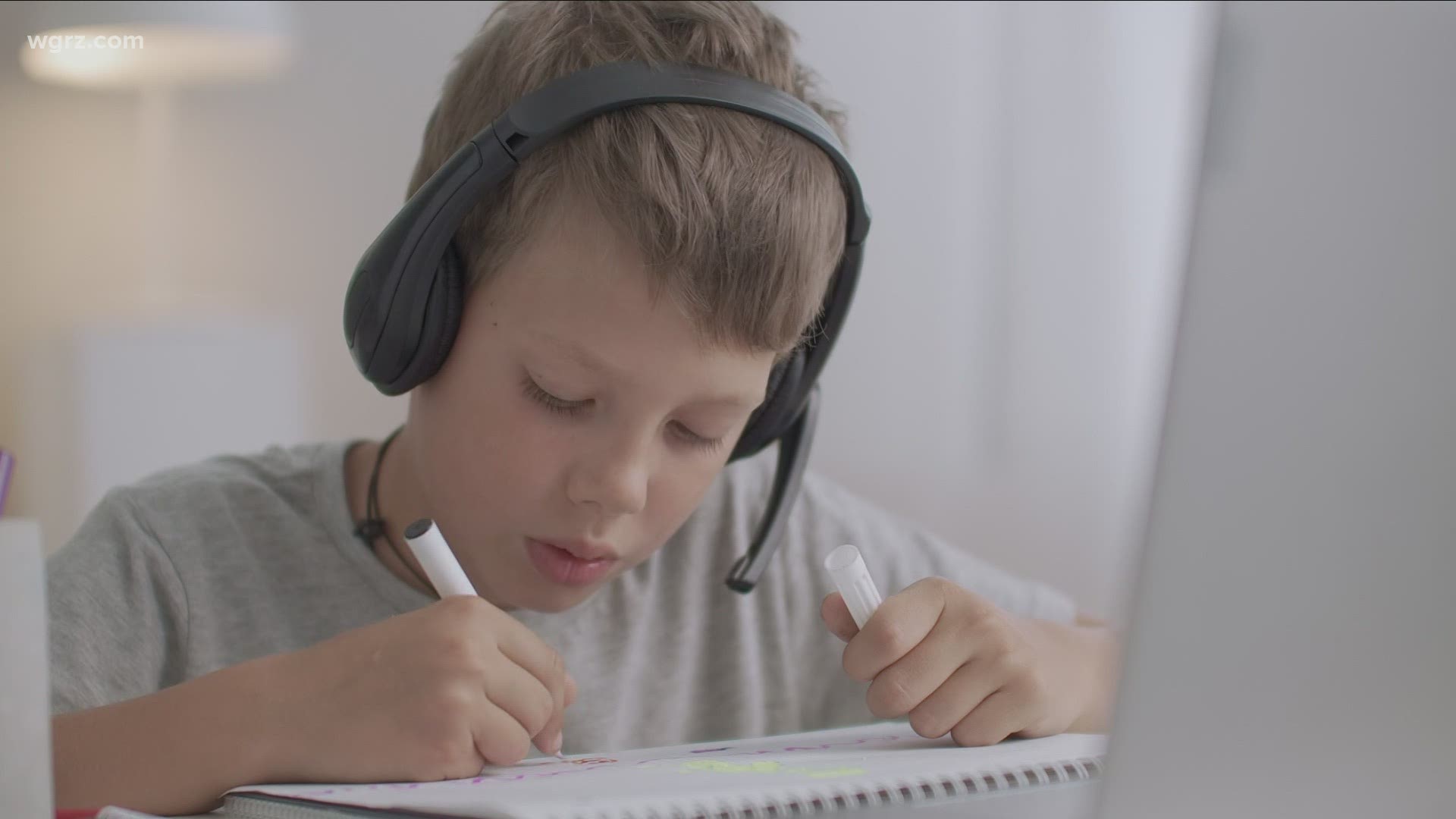BUFFALO, N.Y. — We're a few weeks into the school year and for many students here in Western New York learning is happening, at least in some capacity, at home rather than in the classroom.
With more time looking at a screen, we spoke to Dr. Steven Awner about what parents can do to protect their children's eyes during the day.
He's the Medical Director of Pediatric Ophthalmology at Oishei Children's Hospital.
Awner told 2 on Your Side, "The biggest question that I hear from parents is how much screen time is okay, what about eye strain and what techniques can they use at home with their kids to try and minimize the amount of problems that the child could have either with eye strain or fatigue."
Dr. Awner says there shouldn't be damage to the eyes, but additional screen time can potentially lead to eye strain, which can be uncomfortable and make it harder to focus throughout the day.
"One of the things that happens is we all tend to blink less when we're engaged on the screen and by blinking less our eyes tend to dry out more and we'll have more symptoms of dry eyes," said Dr. Awner.
He added, "And the symptoms associated with that are typically a burning or stinging sensation. Sometimes the body will make a lot of tears to replace what's not there and you can have tears running down your cheek. So certainly if you experience that. It's time to close your eyes for 30 seconds and take a break."
Another idea is what Dr. Awner described as the "20, 20, 20 rule."
"The idea is that after being on the screen for about 20 minutes, you want to take a 20-second break and gaze off into the distance, so look away from the computer screen. The 20 feet is just a suggestion as far as looking out the window or across the room."
Dr. Awner also said children tend to get very close to their screens.
Instead, he explained students should ideally be around two feet or arms-length from their devices.
Another concern to be mindful of is that our devices give off more blue light than what a child might be used to during the day.
"There are some settings on a lot of these devices where they'll have what they call a nighttime setting and that decreases the amount of blue light that comes from the screen," said Dr. Awner.
He added that if parents want to check their child's vision at home, they can visit safeeyesamerica.org.


